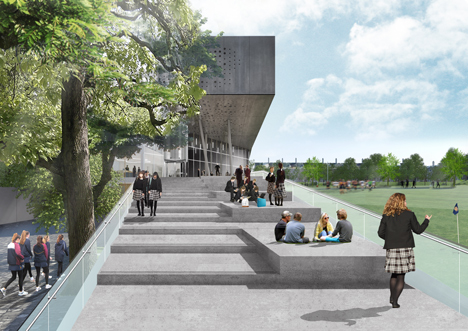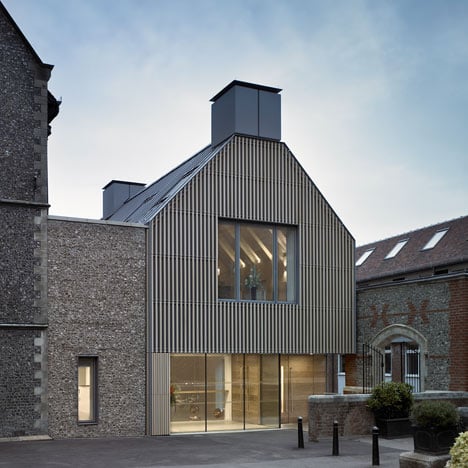OMA to create new sports and science facility at historic English college
OMA has unveiled its design for a new sports and science facility at Brighton College, England – a historic school campus made up of buildings by George Gilbert Scott and Thomas Graham Jackson.
As the biggest construction project in the school's 170-year history, the scheme will bring together sports and science departments into a three-storey building expected to feature a running track on the roof and a swimming pool in the basement.
OMA's design, which was submitted for planning approval earlier this month, is for a linear building located at the edge of the school playing field – separate from the historical quadrangle, made up of gothic-revival buildings completed by imminent English architects Scott and Jackson in the late-19th and early-20th centuries.

Sports facilities will contained on the ground floor, with the sports hall opening out to the pitch, while the science department will be raised above like a "skeletal bridge", according to OMA.
"Inside, views from one department into the other make for lively and animated circulation throughout the new building, creating an unexpected interplay between sport and sciences," said the firm.
The building's facades are intended to mimic the rhythm of terraced houses adjacent to the site, helping the new addition to fit in with its context.
Rem Koolhaas' firm – whose past education projects include a school of architecture at Cornell University in New York – won an invited competition to design the building in 2013.

It forms the final phase of a £40 million masterplan for the private school, which includes two new buildings by Allies and Morrison – a boarding house and an amenities building.
Hopkins Architects and Eric Parry Architects are also working on new buildings for the college.
Construction of the sports and science building is anticipated to start in July 2016, with completion pencilled in for 2018. A 1970s sports hall, classroom block, maintenance building and two-storey pavilion must all be demolished first.